AWS Certified Developer - Associate
Storage
S3 ACL and Resource Policies Demo
In this lesson, you will learn how to define resource policies that grant specific users access to certain objects or folders within an S3 bucket. Additionally, you'll see how to combine these resource policies with IAM policies to achieve fine-grained access control. Testing these policies involves simulating access from multiple AWS users using three different tabs, each representing a unique AWS user.
Environment Setup
On your screen, you should see three colored tabs:
- Blue Tab: Account One, User One (the bucket creator)
- Green Tab: Account One, User Two
- Yellow Tab: Account Two, User One (commonly named "Admin")
These distinct logins enable you to simulate different permission scenarios.
Creating the S3 Bucket
Log in as Account One, User One (Blue Tab) and complete the following steps:
- Open the S3 console.
- Create a new bucket (e.g.,
demo-bucket) using default settings.Note
ACLs are not used in this demo because they are considered a legacy method.
- Public access is blocked.
- Versioning is disabled.
- After the bucket is created, open it and upload several files.
After uploading, verify the access behavior:
- When accessing a file through the Open action in the S3 console, the file is viewable.
- Accessing the file via its public URL returns an "Access Denied" error due to the bucket's secure default settings.
Testing IAM Policy Permissions
Switch to the Green Tab (Account One, User Two) and evaluate the following:
- Review the IAM policy attached to User Two. This policy, named "list buckets," permits listing buckets and their contents.
- As a result, User Two can see the bucket and its file list but receives an "Access Denied" error when trying to open any object.
Summary:
- Account One, User One: Has full access as the bucket creator.
- Account One, User Two: Can list buckets and view their contents based on the IAM policy, but cannot open files such as
file1.txt.
Defining a Resource Policy for User Two
Switch back to Account One, User One (Blue Tab) to create a resource policy that allows User Two to access the logs folder in the bucket.
- Navigate to the bucket’s Permissions tab and click Edit Bucket Policy.
- Start with the provided policy wizard template and modify the statement as follows:
- Statement Name:
user2-allow-logs - Principal: Specify the ARN of Account One, User Two (e.g.,
arn:aws:iam::<account-number>:user/user2). - Effect:
Allow - Action:
s3:GetObject
(Refer to the S3 Actions reference for more details.) - Resource: Apply the policy only to objects within the
logsfolder. For example:arn:aws:s3:::kk-resource-policies/logs/*
The asterisk ensures that all objects underlogsare covered.
- Statement Name:
- Save the policy.
Now, test the configuration by switching back to Account One, User Two:
- Navigate to the
logsfolder and open a file (e.g.,log1). It should open successfully. - Attempting to open files outside the
logsfolder (likefile1.txt) should result in "Access Denied."
Allowing Deletion in the Traces Folder
Next, allow User Two to delete objects within the traces folder:
- While still logged in as Account One, User One, add a new statement to the bucket policy:
- Statement Name:
user2-allow-delete - Principal: Same as before (Account One, User Two).
- Effect:
Allow - Action:
s3:DeleteObject - Resource: Limit this action to objects in the
tracesfolder, for example:arn:aws:s3:::kk-resource-policies/traces/*
- Statement Name:
- Save the updated policy.
Then, switch back to Account One, User Two:
- Navigate to the
tracesfolder and try deleting an object (e.g.,trace1). The deletion should succeed. - Attempts to delete objects outside this folder should fail.
Combining Multiple Actions in a Single Statement
It's possible to include multiple actions in a single policy statement with proper resource definitions. For example, if you try to add s3:DeleteBucket (which applies to the bucket) alongside s3:GetObject (which applies to objects), you will encounter errors unless you specify both resources correctly.
Solution:
Include an array of resources:
- One for bucket-level actions (e.g.,
arn:aws:s3:::kk-resource-policies) - Another for object-level actions (e.g.,
arn:aws:s3:::kk-resource-policies/*)
After updating the resource specifications, save your changes and confirm that the policy now supports both actions.
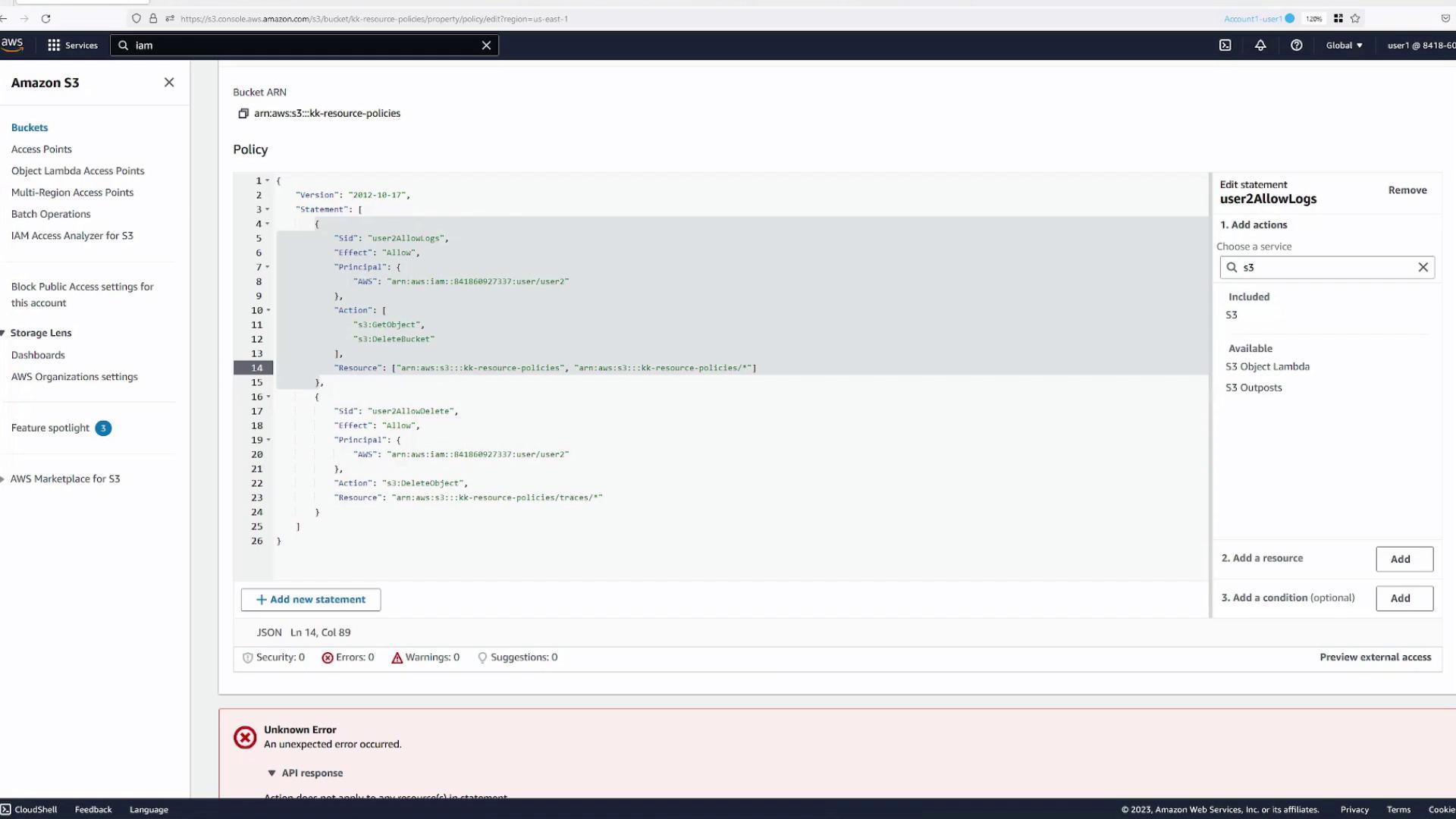

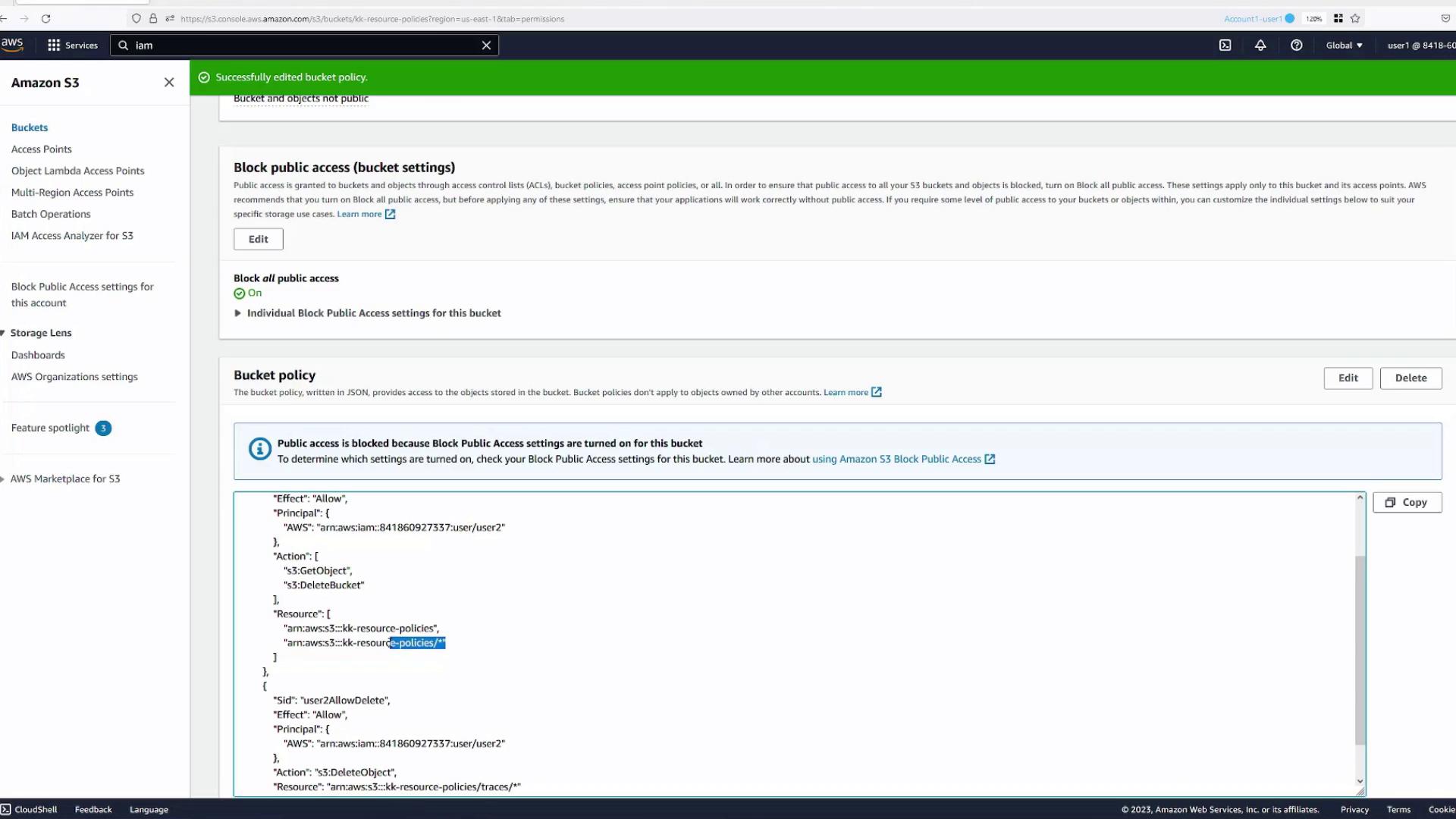
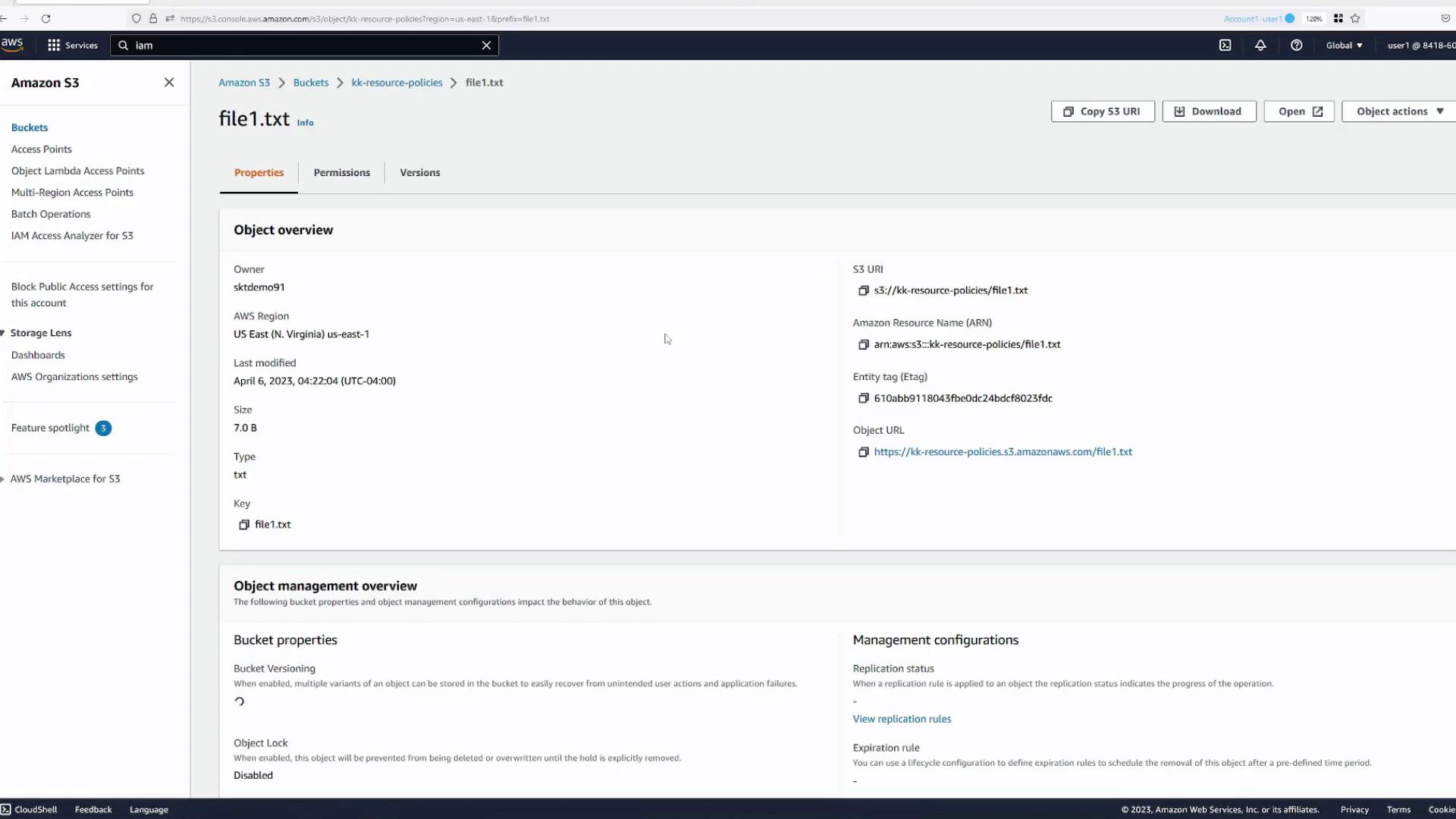
Allowing Public (Anonymous) Access to a Specific Folder
By default, the bucket is not publicly accessible. To allow anonymous users to access specific objects (for instance, those in the media folder), follow these steps:
- Open the bucket's Permissions tab and add a new policy statement.
- Update the statement as follows:
- Principal:
"*"(all users) - Effect:
Allow - Action:
s3:GetObject - Resource: Specify access to the
mediafolder objects; for example:arn:aws:s3:::kk-resource-policies/media/*
- Principal:
- Save the changes.
If an error occurs when saving the policy, it likely stems from the bucket’s block public access settings. To resolve this:
- Navigate to the Block public access settings.
- Disable the relevant settings that prevent public access (either all or selectively as needed).
- Confirm the changes and save the bucket policy again.
After saving, verify public access by obtaining the public URL of an object (e.g., an image) in the media folder. Accessing the URL should display or download the file, confirming that the policy works.
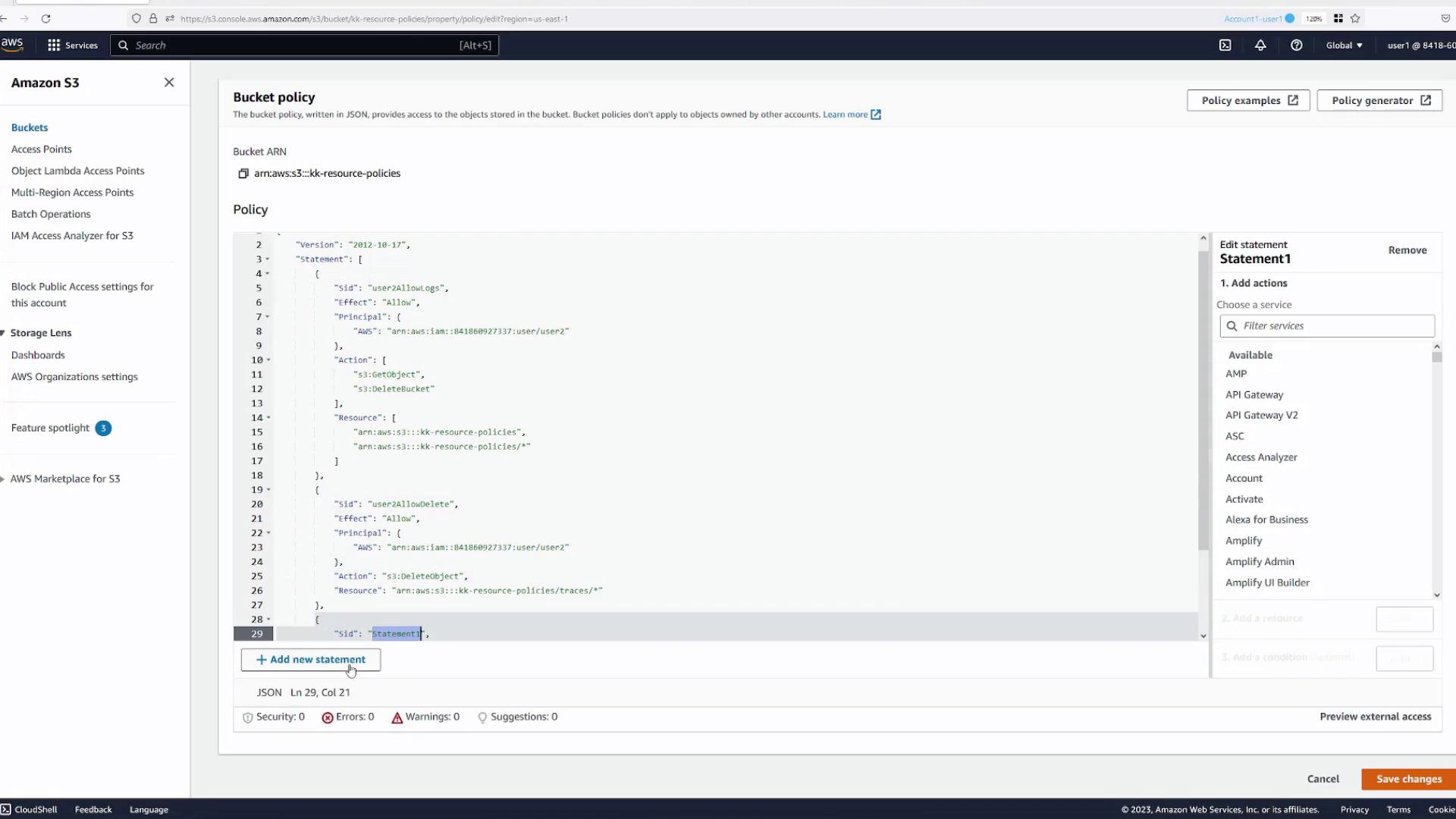

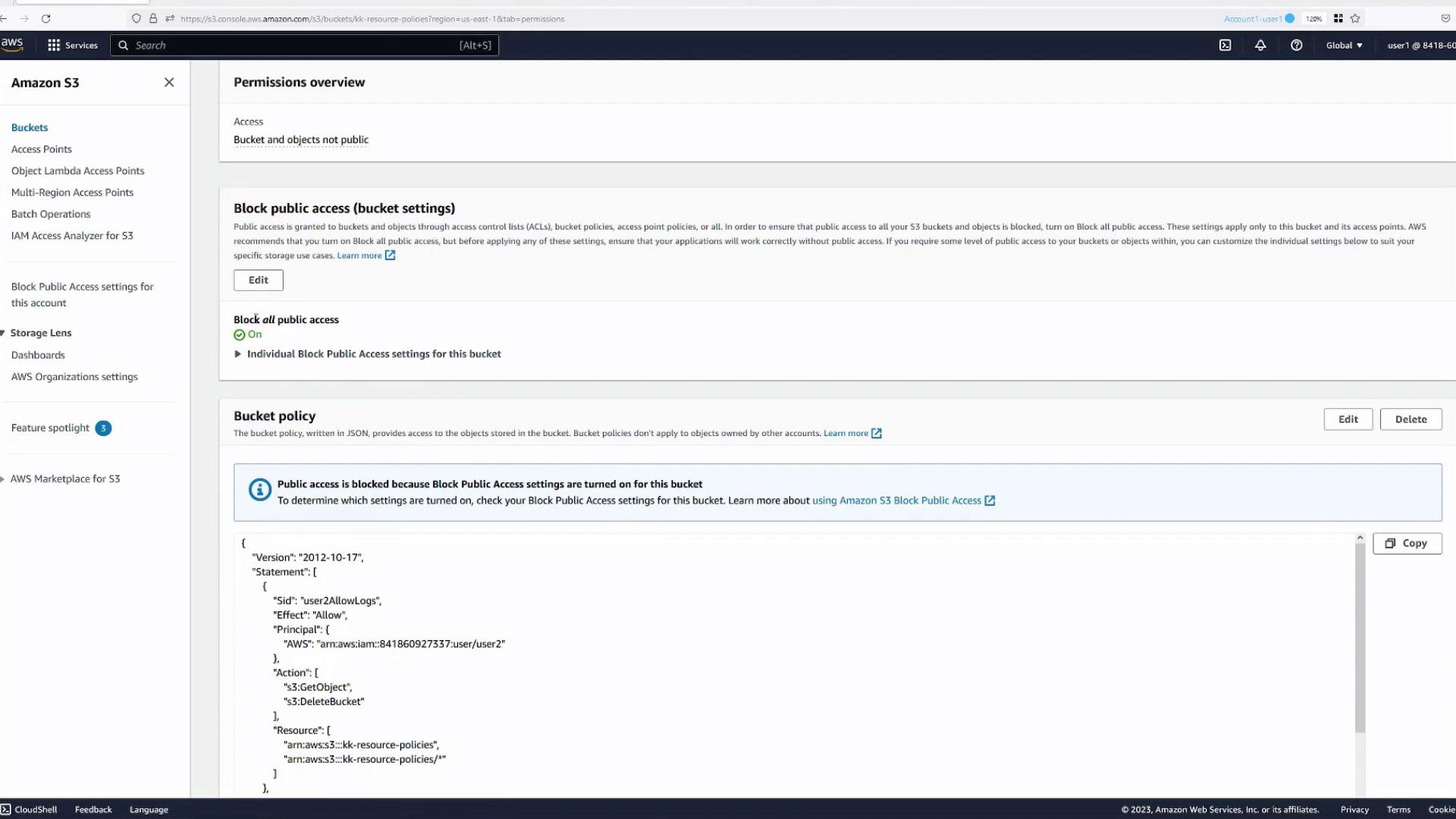
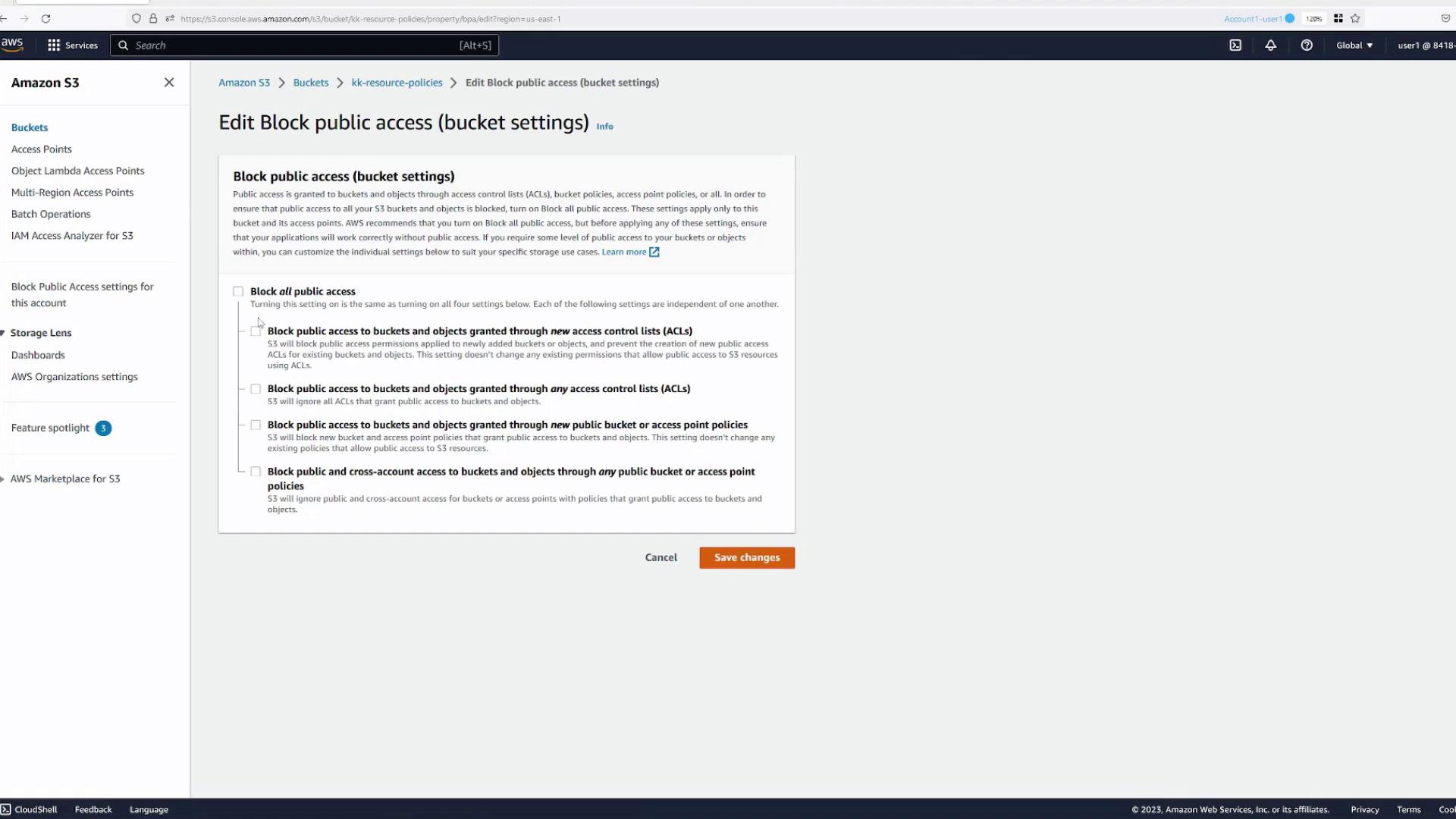
After updating the settings and saving the policy:
- Verify that an object in the
mediafolder (e.g., an icon or image) can be accessed via its public URL. - Confirm that the file displays or downloads correctly.
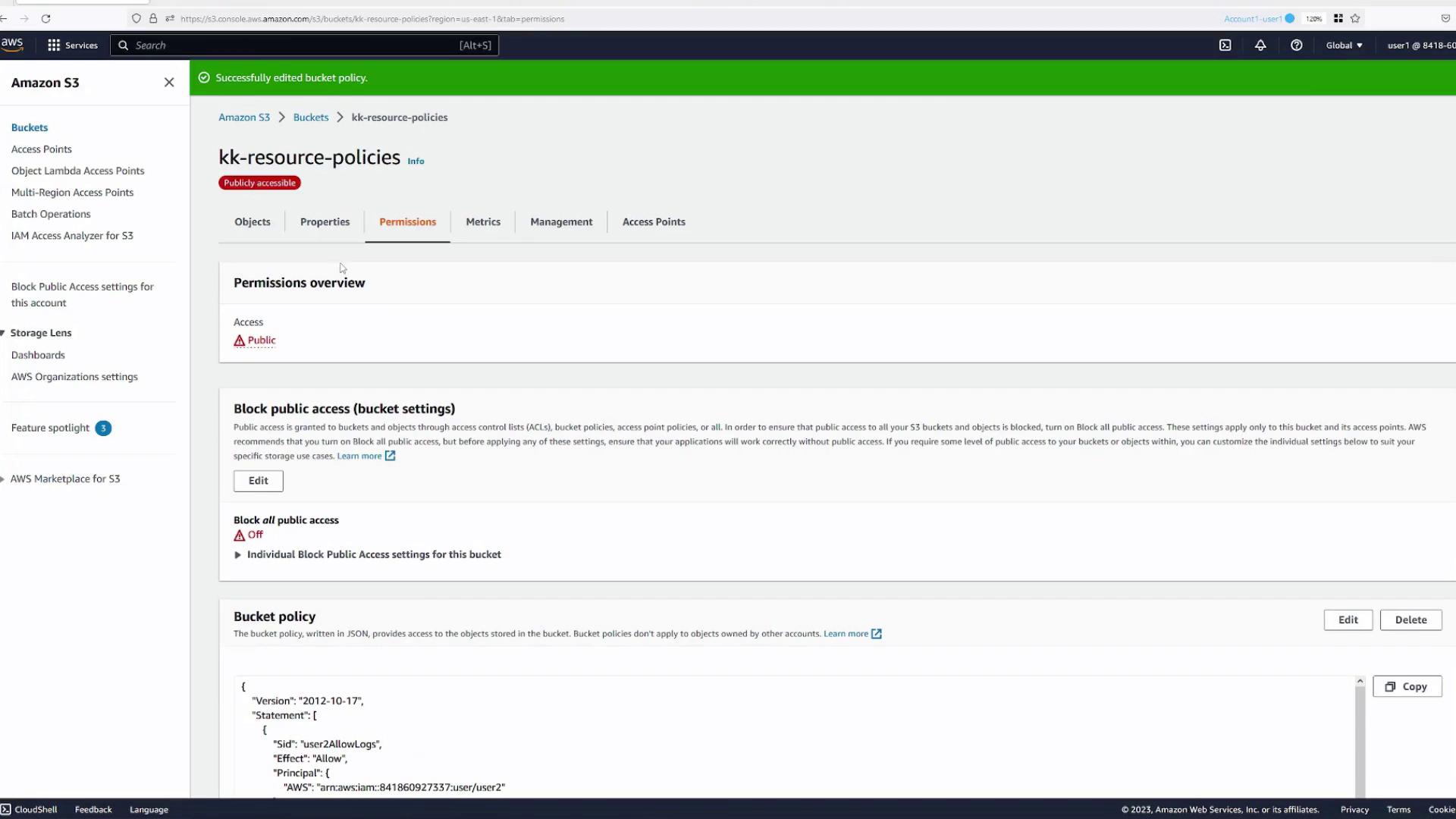
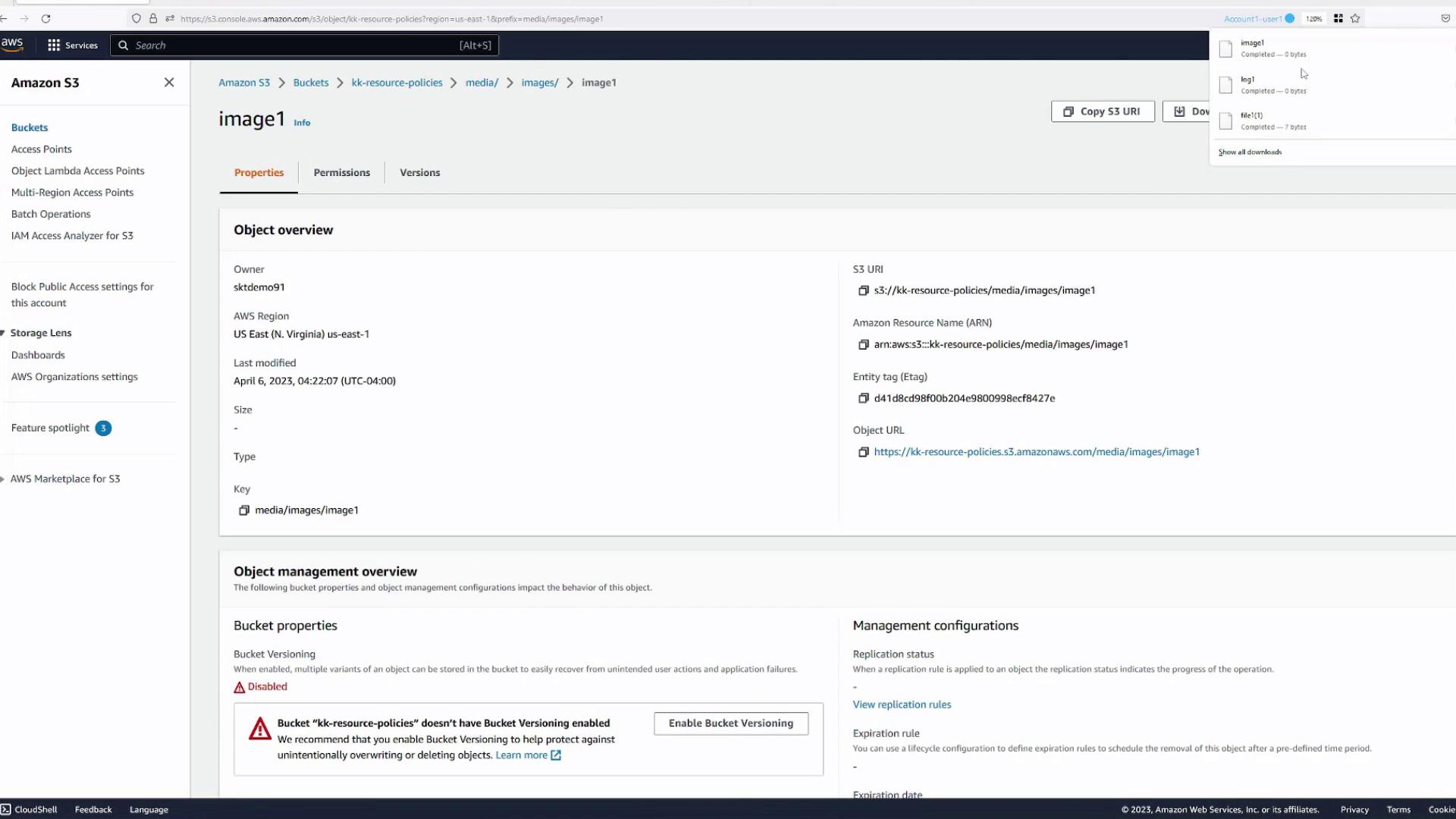
Granting Access to a User in a Different AWS Account
Finally, allow a user from Account Two (Yellow Tab) to access your bucket.
- Open AWS CloudShell in Account Two.
- Run the following command to list buckets:
This should result in an "Access Denied" error initially.aws s3 ls - Attempt to list a specific bucket (replace
<bucket-name>with your bucket's name):
You'll see an "Access Denied" error since no resource policy for external account access has yet been defined.aws s3 ls s3://kk-resource-policies
Return to Account One, User One (Blue Tab) to add a new policy statement that grants access:
- In the bucket’s Permissions tab, add a statement with the following details:
- Statement Name:
allow-account2-user-admin - Principal: Specify the ARN for the admin user in Account Two (e.g.,
arn:aws:iam::<account2-number>:user/Admin). - Actions: Grant actions such as
s3:ListBucketands3:DeleteObject.- For bucket-level actions like
s3:ListBucket, specify the bucket ARN (e.g.,arn:aws:s3:::kk-resource-policies). - For object-level actions like
s3:DeleteObject, specify the ARN for objects in a specific folder (e.g.,arn:aws:s3:::kk-resource-policies/logs/*).
- For bucket-level actions like
- Statement Name:
- Save the policy.
Return to Account Two and test again:
- Run
aws s3 lsto confirm the bucket contents are visible. - Attempt to delete an object:
- Deletions in unauthorized folders (like the root) should be blocked.
- Deleting an object in the
logsfolder (e.g.,log1) should succeed.
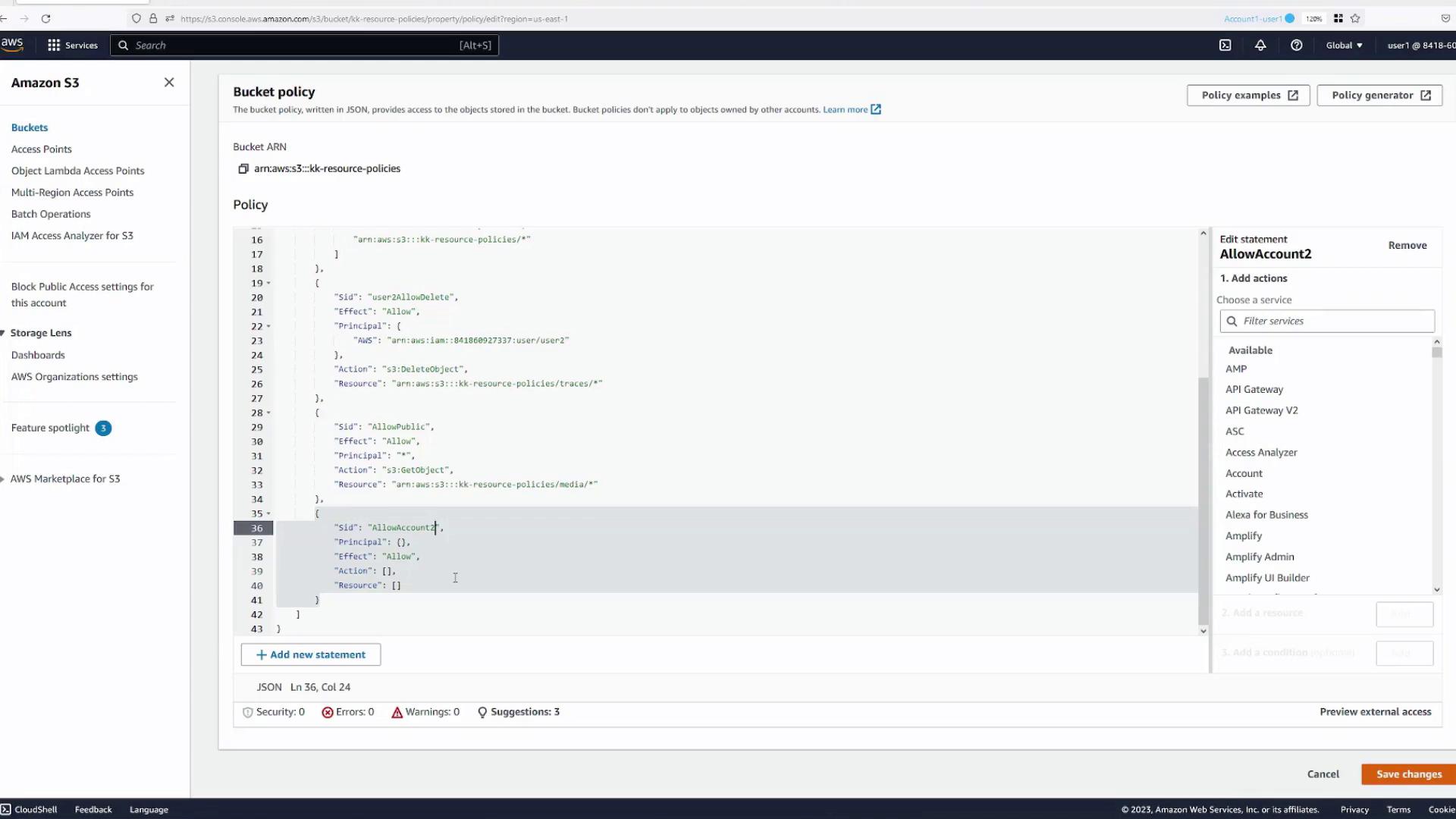
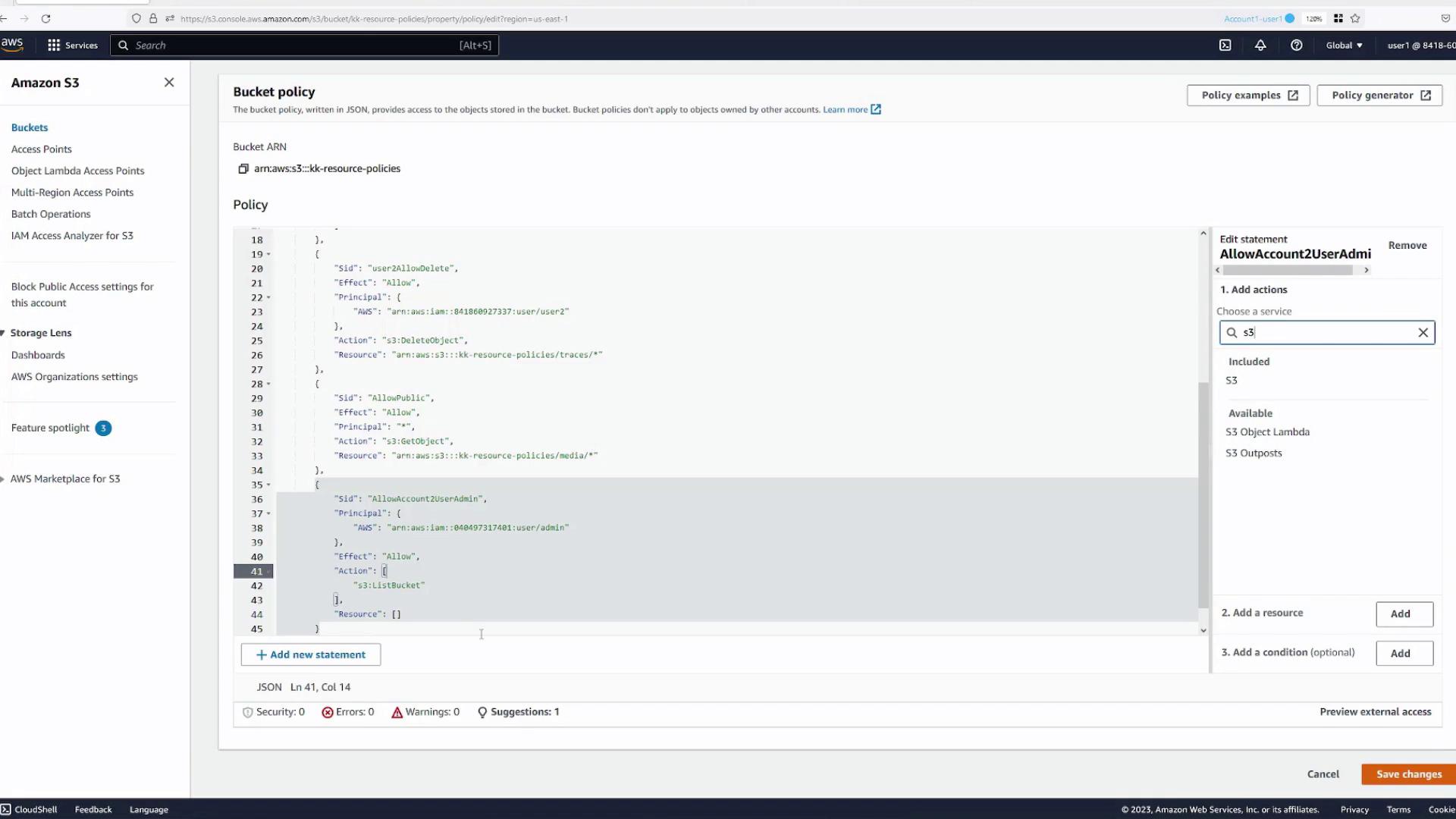
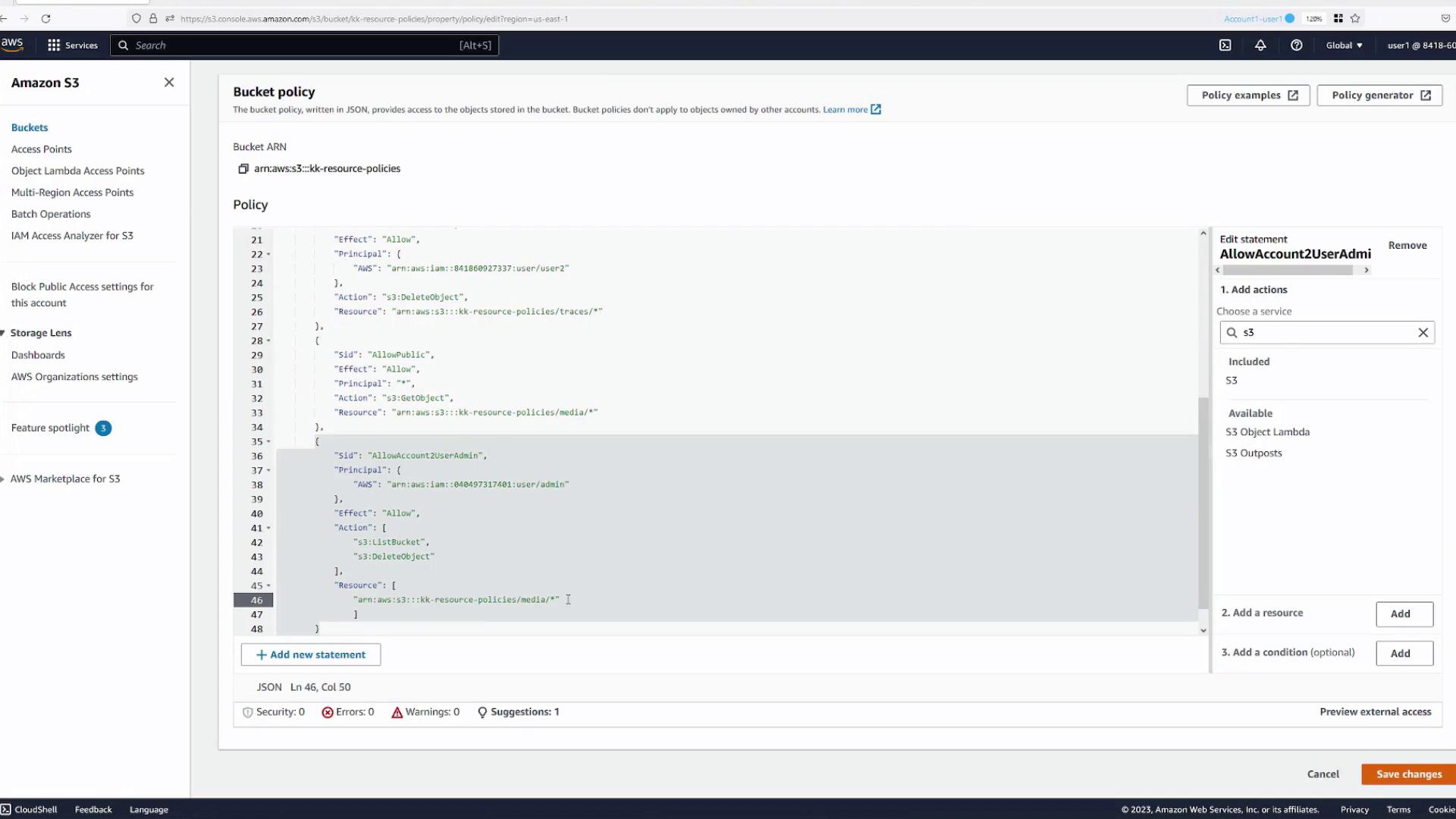
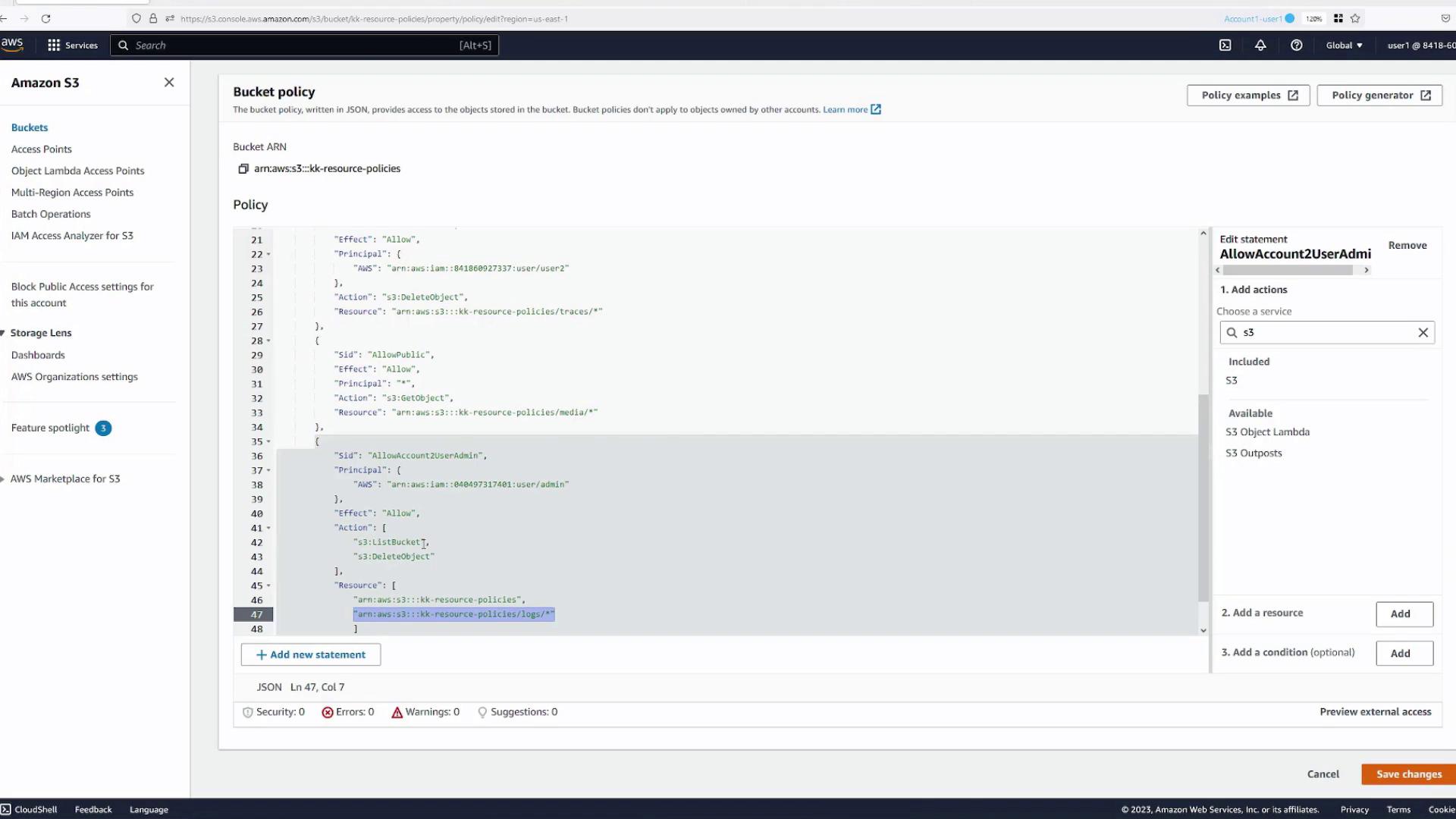
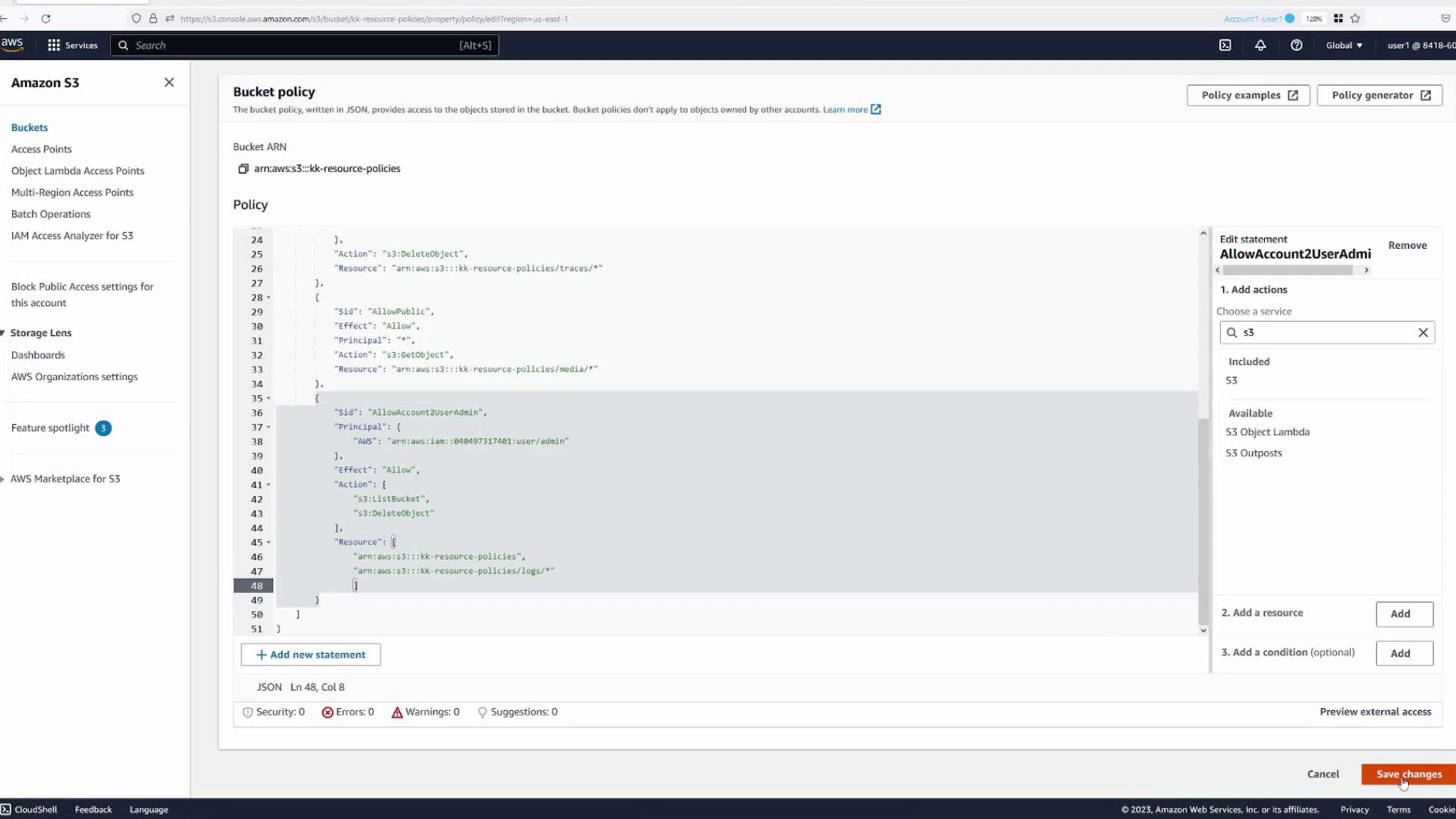
Back in AWS CloudShell on Account Two, verify the following:
- Listing the bucket contents now succeeds.
- Attempting to delete an object in a folder without permission (e.g.,
file1.txt) returns an "Access Denied" error. - Deleting an object within the
logsfolder (e.g.,log1) completes successfully.
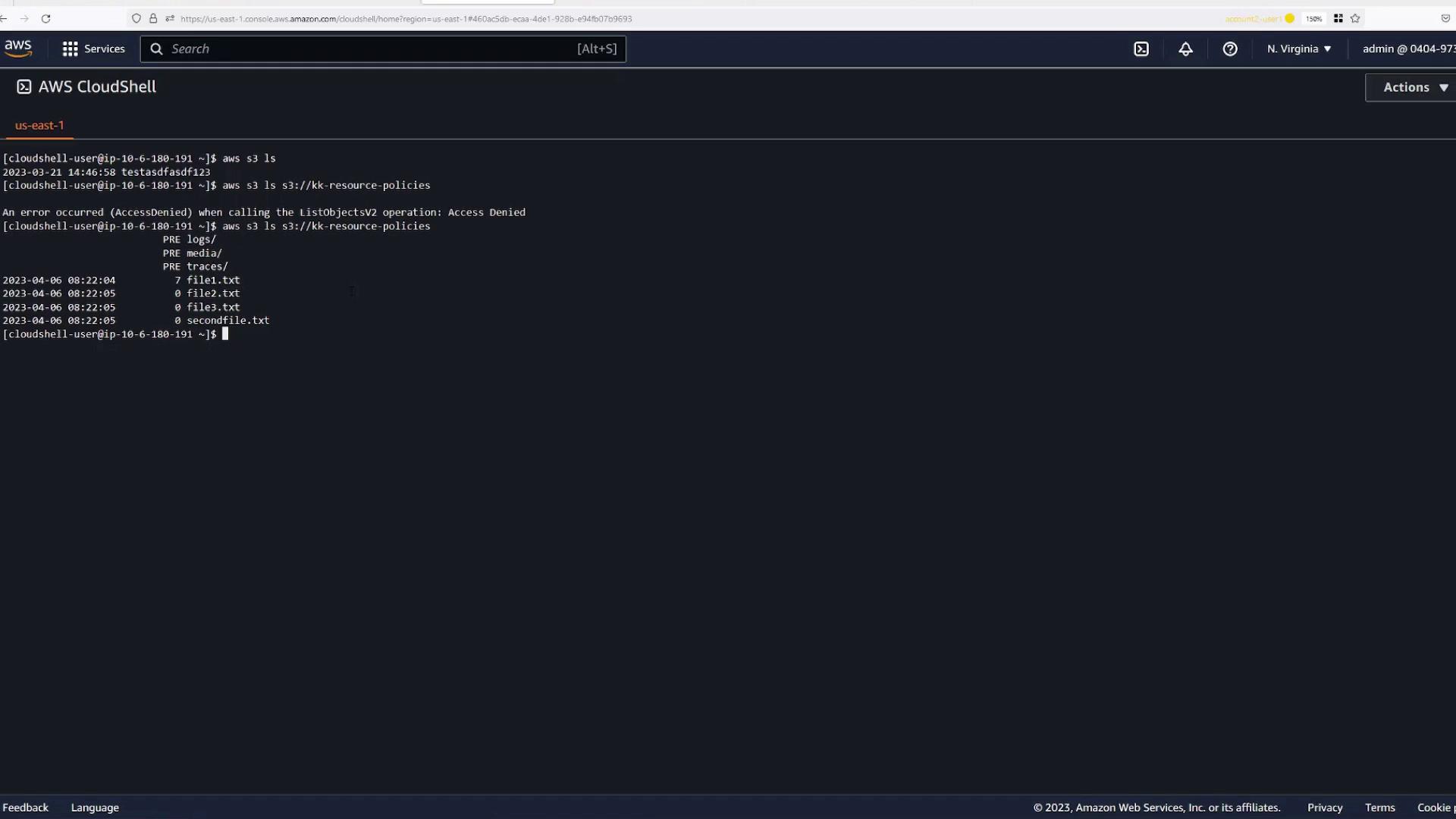
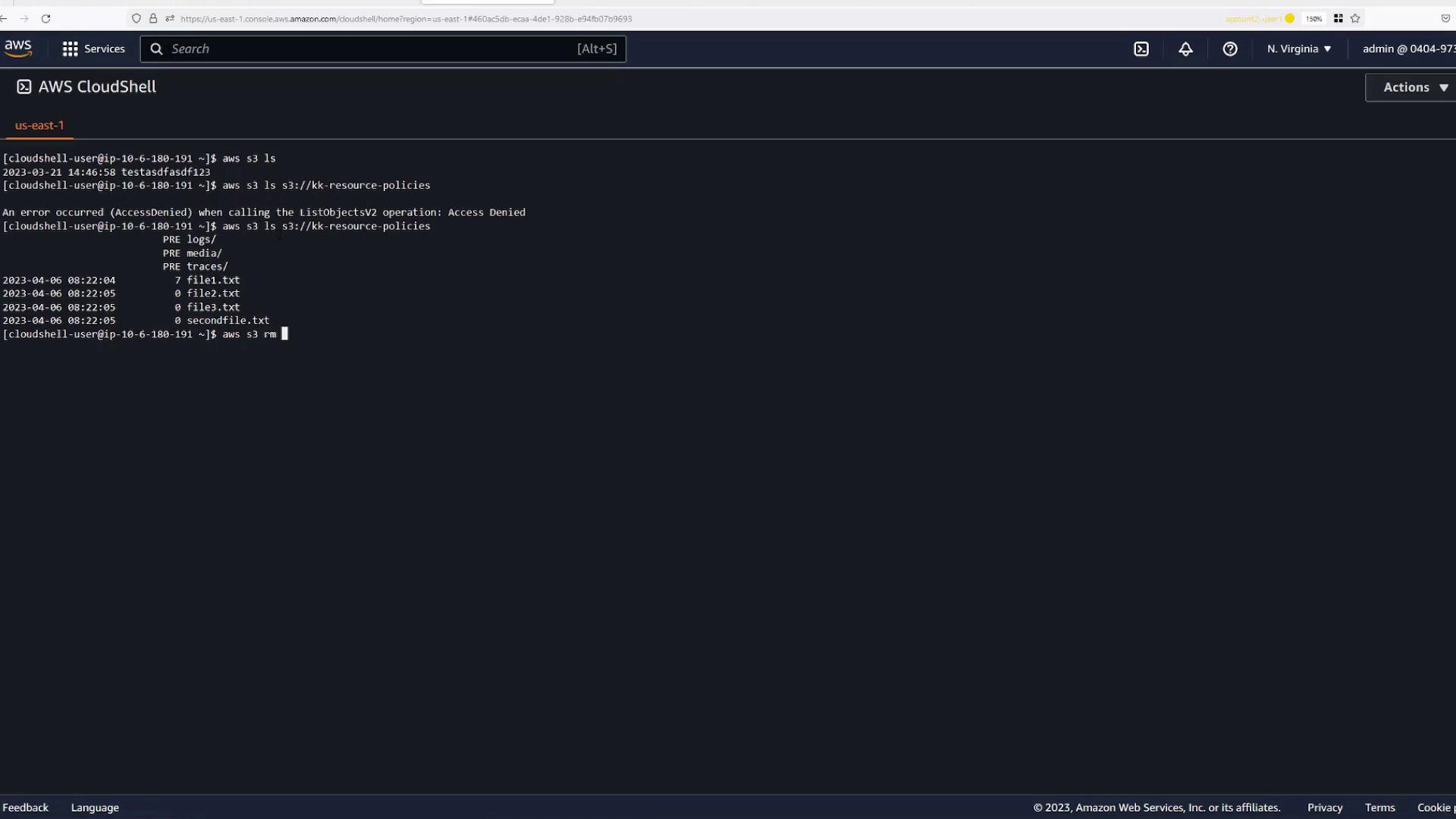
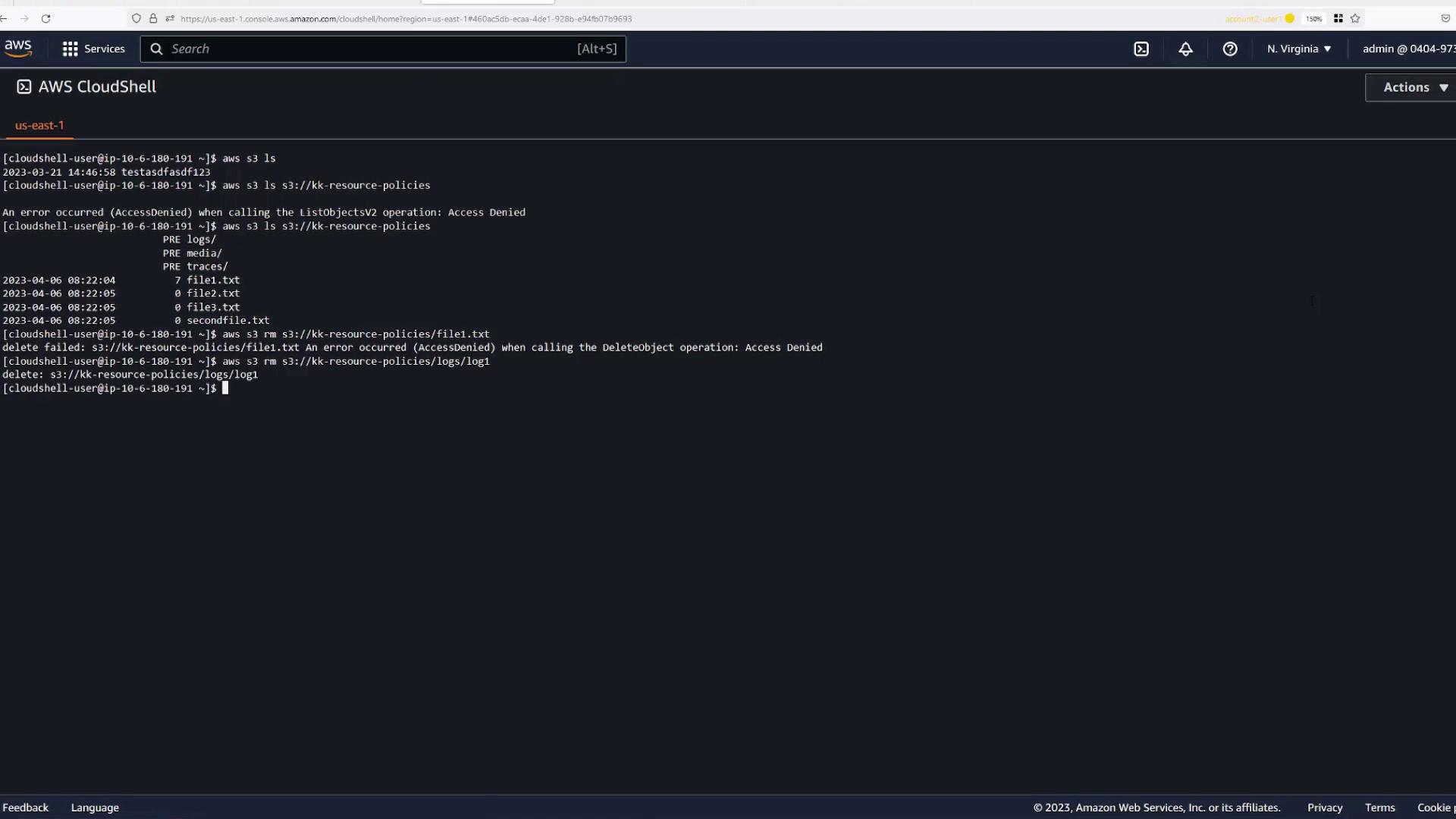
Conclusion
In this lesson, you explored various scenarios for configuring S3 bucket resource policies. Key takeaways include:
- Restricting access to specific folders (e.g.,
logs,traces, andmedia). - Combining IAM policies with resource policies for detailed access control.
- Allowing public access to select parts of the bucket.
- Extending permissions to users from different AWS accounts.
These strategies provide granular control over S3 bucket access, ensuring that each user is granted only the permissions they require.
Happy cloud securing!
Watch Video
Watch video content